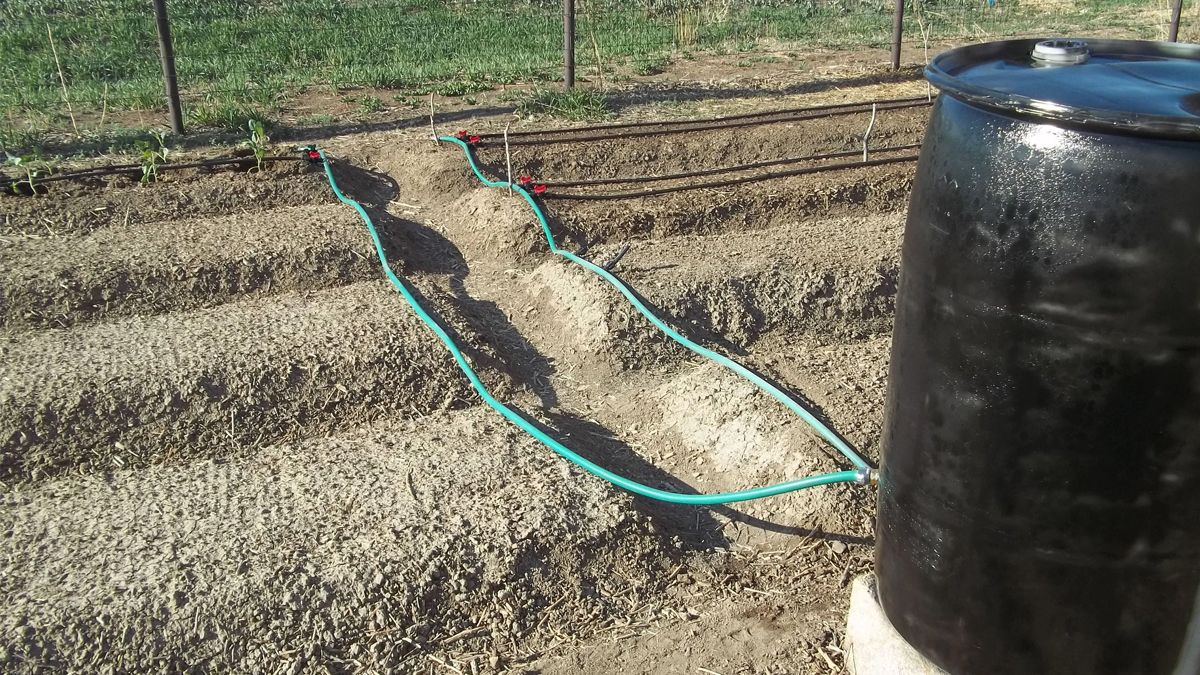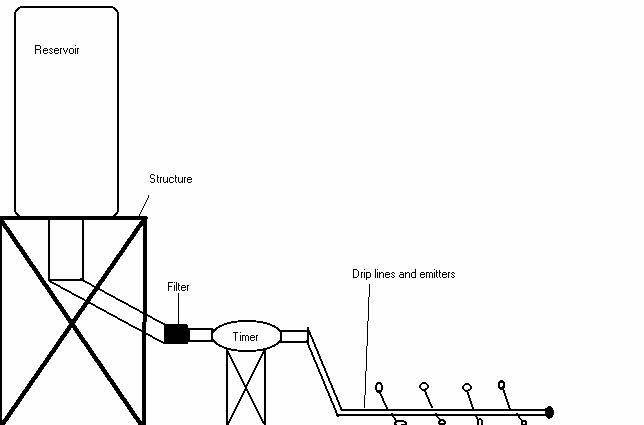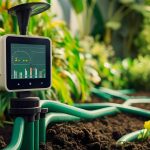Imagine a garden that thrives without constant attention, where plants receive just the right amount of water effortlessly. This is not a dream; it’s a reality you can achieve with a gravity-fed irrigation system.
If you’ve ever felt overwhelmed by watering chores or worried about water wastage, you’re not alone. But here’s the good news: building your own gravity-fed irrigation system is simpler than you might think. You don’t need to be an expert in plumbing or have a degree in engineering.
All it takes is a bit of planning, some basic materials, and a willingness to embrace this eco-friendly solution. By harnessing the natural force of gravity, you can deliver water efficiently to your plants, conserving resources and saving time. In this guide, you’ll discover the step-by-step process to create a system that works for your garden or farm. With each section, you’ll gain practical insights that empower you to take control of your watering needs. So, if you’re ready to transform your gardening routine and boost your plant’s health, let’s dive into how you can build your own gravity-fed irrigation system.

Planning Your Irrigation System
Creating a gravity-fed irrigation system involves using gravity to move water from a higher source to lower fields. Begin by selecting a suitable water source and designing a layout with pipes or channels that direct water efficiently. This eco-friendly method saves energy and suits areas with varying elevations.
Planning Your Irrigation System Building a gravity-fed irrigation system is a rewarding challenge. It demands careful planning to ensure efficiency and effectiveness. You’ll need to consider every detail, from the water source to the layout of your garden. Without a solid plan, you might find yourself adjusting and readjusting endlessly. So, let’s dive into the essential steps to create a smooth-flowing system.Assessing Water Source
Begin by identifying your water source. Is it a rainwater collection tank, a nearby stream, or a well? Each source has its unique attributes and limitations. Make sure your source is reliable and abundant enough to meet your irrigation needs throughout the growing season. Think about the distance from your garden, as this will affect water pressure and flow. Consider the elevation of your water source. The higher it is relative to your garden, the better your water pressure will be. A friend of mine discovered this the hard way when his low-lying pond struggled to irrigate his uphill vegetable patch.Designing Layout
Sketch out your garden’s layout. Keep your plants’ water needs in mind as you plan. Group plants with similar requirements together to avoid over- or under-watering. Determine the most efficient route for your pipes or hoses. Minimize bends and curves to maintain strong water flow. Remember, gravity is your power source here, so you want to make its job as easy as possible. Plan for future changes. Gardens evolve, and so should your irrigation system. Allow for easy adjustments or expansions to accommodate new plantings or layout changes.Calculating Water Flow
Calculating water flow is crucial to ensure your system meets the needs of your plants. You need to know the flow rate of your water source. This will help you determine the pipe size and number of outlets required. Think about the slope of your garden. A steeper slope will increase water pressure, which can be beneficial but might also lead to erosion or uneven watering. Test your system before planting. Adjust as needed to ensure all areas receive adequate water. This step might seem tedious, but it’s a small price to pay for a thriving garden. Have you ever had a wilting plant teach you this lesson? It can be a hard one.
Gathering Materials And Tools
Building a gravity-fed irrigation system requires careful planning and the right materials. Gathering the correct materials and tools is the first step. It ensures your system works efficiently. Each component plays a role in water flow and distribution. Selecting suitable materials affects the system’s longevity and performance.
Choosing Pipes And Fittings
Pipes are essential for directing water. Choose durable pipes made of PVC or polyethylene. These materials resist wear and tear. Select pipes that are the right diameter for your water flow needs. Fittings connect pipes together. Get T-joints, elbows, and couplings. They help navigate the terrain of your garden. Make sure all parts fit snugly. This prevents leaks.
Selecting Valves And Filters
Valves control water flow. Use gate valves for easy operation. They are simple to open and close. Filters keep debris out of your system. Install a filter at the water source. It protects the pipes from clogs. Clean filters regularly to maintain efficiency. Valves and filters are crucial for a smooth operation.
Tools For Installation
The right tools simplify installation. A hacksaw cuts pipes to length. Use a wrench to tighten fittings. A level ensures pipes are straight. This prevents water pooling in low areas. A shovel helps dig trenches for pipe placement. These basic tools are usually enough for most projects.
Installation Process
The installation process of a gravity-fed irrigation system is crucial. It ensures water flows efficiently to your plants. Proper installation can save time and water.
Preparing The Site
Start by choosing a suitable location for your water source. Ensure the site is higher than the garden area. This height difference allows gravity to do its work. Clear the area of debris and level the ground. A flat surface helps the system function smoothly. Mark the path for the pipes using stakes and string. This guides where you’ll lay the pipes.
Assembling The System
Begin with the water tank or barrel. Position it securely on a raised platform. Connect the main pipe to the tank’s outlet. Use sturdy connectors to prevent leaks. Lay the pipes along the marked path. Ensure each section is tightly joined. Attach emitters or drip lines to the main pipe. These deliver water directly to your plants. Secure all connections with clamps for stability.
Testing For Leaks
Turn on the water source to fill the system. Observe all connections for any leaks. Tighten any loose fittings if necessary. Check the flow at each emitter. Ensure water reaches every part of the garden. Adjust the system as needed for even distribution. Regular checks prevent water waste and ensure efficiency.

Maintenance And Troubleshooting
Learn to maintain and fix a gravity-fed irrigation system with ease. Regular checks prevent leaks and blockages. Handle minor issues quickly to keep plants healthy and water flowing smoothly.
Maintaining and troubleshooting your gravity-fed irrigation system is crucial for ensuring its long-term efficiency. Just like any other system, regular checks and quick fixes can save you from bigger headaches down the line. Imagine the satisfaction of knowing your plants are getting the exact amount of water they need without any hiccups. Ready to keep things flowing smoothly? Let’s dive into the essentials.Regular Inspection
Regular inspection is your first line of defense against unexpected issues. Make it a habit to walk along the piping and observe any leaks or irregularities. Use a checklist to ensure you don’t miss anything. Why not set a reminder on your phone for bi-weekly checks? You’ll be surprised how a little diligence can prevent major problems.Cleaning Filters
Cleaning filters is an often overlooked task, yet it plays a vital role in system efficiency. Clogged filters can drastically reduce water flow, starving your plants. Remove filters and rinse them with water, ensuring all debris is gone. Imagine the frustration of discovering your garden dried out because of a simple blockage—easy cleaning prevents that.Addressing Common Issues
Be ready to address common issues like leaks and uneven water distribution. A small leak can waste gallons of water over time, so patch it up immediately. Use waterproof tape or sealant for quick fixes. Uneven distribution may signal a blockage or kink in the tubing. Adjust the tubing and check connections to ensure smooth flow. Have you ever wondered if a small tweak could save your entire garden? Often, it can. Maintaining your gravity-fed irrigation system doesn’t have to be a chore. With regular inspections, clean filters, and swift problem-solving, you’ll keep your garden thriving. What steps will you take to ensure your system runs like clockwork?Conclusion
Creating a gravity-fed irrigation system can be rewarding. It’s simple and effective. This system saves water and reduces costs. It uses the earth’s natural forces to work. Anyone can set it up with basic tools. No need for high-tech gadgets or complex machinery.
Perfect for gardens or small farms. Consistent watering boosts plant health and growth. Start small and expand as needed. Enjoy the benefits of a sustainable and efficient irrigation method. Your plants will thank you. Happy gardening!



